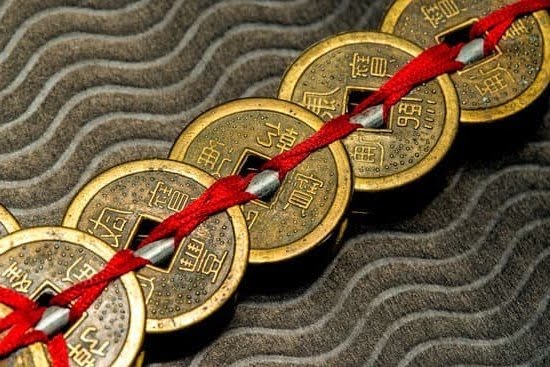Introduction to Feng Shui and the Purple Color Meaning
Feng Shui is an ancient Chinese art form and practice used to harmonize the energy between people, nature, and the environment. It uses various symbols, objects, and colors to restore balance in a person’s life. The origin of Feng Shui can be traced back to around 3000 BC and since then it has been used in homes, gardens, offices and monuments as a means of restoring harmony and preventing potential conflicts.
The use of the purple color in Feng Shui was seen as a symbol of wealth, wisdom, power and courage. It has long been believed that the purple color can protect against bad luck and evil forces while attracting positive energy into any space. For example, this color is used to protect against negative influences in particular corners of buildings or spaces to encourage virtue and good luck. It is also believed that placing images of deities such as the Eight Immortals or other auspicious motifs will further strengthen this protection against evils.
In addition to protective powers being attributed to purple within Feng Shui traditions, it is also commonly thought that certain shades have beneficial effects on mental health when incorporated into one’s home or workspace decor. Light shades are hugely popular decorative choices for bedrooms especially as they are soothing in their beauty; dark colours are often added intentionally to create contrasts which help visually energise large areas with high ceilings.
Purple Color in the Five Element Cycle
In Feng Shui, the purple color is associated with the metal element. The metal element brings balance, clarity, and structure to the home. It encourages clear thinking and improves concentration, which means it is helpful for many different housing situations. In a living space that is too dominated by yang (active) energy, metal can be used bring yin (passive) energy back into the environment.
The five elements – known as fire, water, earth, metal and wood – interact in a continuous cycle of creation. As each element represents specific qualities and characteristics, using certain colors can enhance certain properties or create desired results. Via its link to the Metal element in Feng Shui practice, purple can be thought of as a colour that draws from this yin/yang complementary relationship – it can be effective in activating harmony between these forces while offering protection and purification and bringing hope to any setting when placed at specific focal points in our homes or environments.
Purple as a Harmonizing Color
In Feng Shui, the color purple is associated with abundance, harmony, and spiritual enlightenment. It is believed that when this color is used harmoniously in the home or office, it can amplify which Chi (positive energy) passes through the space. This creates a powerfully uplifting environment that helps to promote balance and peace. The role of purple in Feng Shui is closely connected to its ability to invite divine energies into the space and enhance them even further.
When compared to other colors used in Feng Shui, like red, white, and yellow, the purpose of purple stands out as unique. Whereas these colors are actively used to encourage a certain kind of energy into the home or office—like wealth luck or calming energies—purple works more subtly; creating an invitation for all energies to be promoted rather than targeting specific ones.
Purple Color Associations
Purple is associated with the trigram of Kan or Water. It is connected to creativity, emotion and intuition. In Chinese Zodiac purple is associated with the Sheep and Monkey, relating to energy derived from wisdom and inner power. Applied in Feng Shui, purple has associations with wealth, success and luck as well as other aspects such as career advancement and relationships. Purple represents high-level cosmic power that protects a space from negative influences leading to harmony, spiritual enlightenment and mental clarity. These associations can be utilized for inspiration in decorating homes with the corresponding colors that align most closely with one’s intentions for harmony within any particular space. The implications of these associations call for mindfulness when designing homes by leveraging on purple color tones to influence the habits, health, wealth & relationships of its inhabitants.
Purple Color Applications
In Feng Shui, purple color represents spiritual energy, serenity and idealism, making it an obvious choice when you are seeking to create an ambiance of stillness and relaxation. In the bedroom, using some shades of purple can help ensure a restful night’s sleep. Painting the walls or having statement furniture in shades of lavender, mauve or amethyst can also be used to stimulate creativity and help strengthen relationships with others.
Purple is also widely used to heal physical ailments such as headaches, migraines and inflammation. Because it is said to symbolize intuition and knowledge, it can also be used to boost mental acuity during meditation or yoga practice. Including decorative items like pillow cases, painted furniture pieces, throws or wall hangings in lavender hues is another way to bring the healing properties of purple into your home. Artwork featuring imagery of violets, lilacs and other shades of purple can also fill a space with calming vibes that promote physical, mental and emotional wellbeing.
Conclusion
The purple color meaning in Feng Shui is heavily associated with the energy of transformation, spiritual growth, and healing. It is believed to bring luck, inner power, and wealth when incorporated into a home. Practically speaking, this means utilizing purple objects such as curtains, paint, or furniture around the house. This can help to attract positive energy which improves relaxation and well-being of people living in these environments. While its primary use lies in Feng Shui practices to produce desired effects within a space, it can also be used more widely for decorative purposes and accessorising with symbolism. Therefore, it can have an impact not only on your environment but could help you enable personal growth and change depending upon how you choose to embrace them. Though its use is confined largely to the orient and Asiatic cultures – particularly China – through history it has been accepted by many other parts of the world too.

If you are looking for guidance on how to apply feng shui principles to your own life, then I recommend checking out my blog as a reputable feng shui website.





